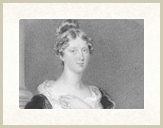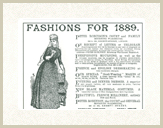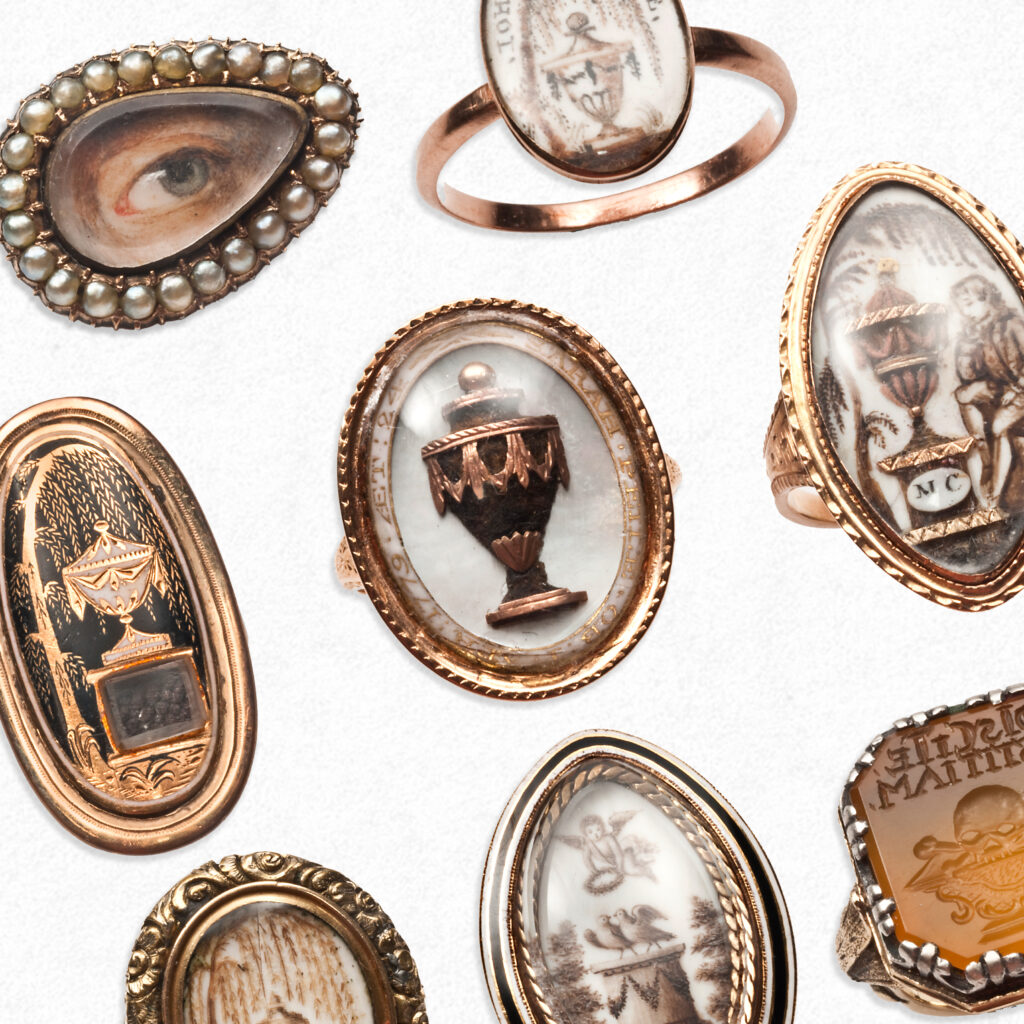Textiles: 19th Century, Part 1
Throughout the 19th century, the height of the mourning industry and cult cut through class structures and was dominated and renewed in 1861 by the mourning of Queen Victoria. The decline of the industry began around 1880, where the psyche began to change, but no one spoke out against the conventions of mourning in fear of harming social status and exclusion. By the middle of the century, it was magazines and fashion plates that set the benchmark for fashion, and their ubiquity promoted homogenous fashion throughout the world. Cheaper dressmakers could copy these fashionable designs and supply the less wealthy, or they could purchase dresses from the establishment of mourning warehouses. This even went to the extent of dying coloured dresses black in order to follow fashion. Following this evolving fashion was quite difficult for those not so wealthy, and the importance of the mourning stages was necessary.
Mourning regulation went through different permeations in the 19th century and became longer and more rigid. It was on the 7th of November, 1817 upon the death of Princess Charlotte that Lord Chamberlain ordered official Court mourning: ‘the Ladies to wear black bombazines, plain muslins or long lawn crape hoods, shammy shoes and gloves and crape fans. The Gentlemen to wear black cloth without buttons on the sleeves or pockets, plain muslin or long lawn cravats and weepers [white cuffs] shammy shoes and gloves, crape hatbands and black swords and buckles.’ For undress wear, dark grey frock coats were permissible. The Second stage was decreed two months later, with the allowance of black silk fabric, fringed or plain linen, white gloves, black shoes, fans and tippets, white necklaces and earrings, grey or white lusterings, damasks or tabbies and lightweight silks for undress wear. Men’s dress was unchanged. The third stage allowed women to wear black silk and velvet, coloured buttons, fans and tippets and plain white, silver or gold combination coloured stuff with black ribbons. Men could wear white, gold or silver brocaded waistcoats with black suits. The rules set by Lord Chamberlain crossed Europe, the United States (from the 1860s / 70s) and colonial territories, but Court mourning was longer than General mourning. General mourning was growing in popularity due to the accessibility of mourning costume and the cost.
The rules became more complex, however, as convention dictated. ‘Mothers should wear black without crape for six weeks after the death of the mothers or fathers-in-law of their married children. A second wife, on the death of her husband’s first wife’s parents, was expected to wear black silk, without crape, for three months.*’ The rules became greatly convoluted, and the importance relied ever higher on the woman. Widowers could remarry as soon as they pleased, even during mourning. The Grand Maison de Noir stated that a man should leave off his mourning for the ceremony but take it up the next day. Furthermore ‘his new wife should equally associate herself with his mourning’, wearing only black or shades of half-mourning in memory of her. Basically, the convention dictated 2.5 years for a husband, 18 months for a parent, twelve months for a child, six months for a sister or brother and six to three months for a first cousin.








